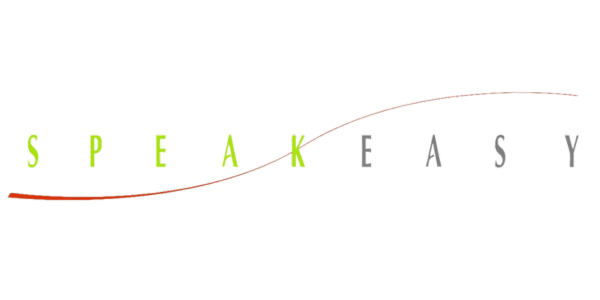18 Dec Insights: Make Your Speech Work for You
Reading Time: 4 minutesby Jason Daily, Faculty and Speech-Language Pathologist
Many of my clients don’t realize just how much their speech patterns are keeping their listeners from staying engaged with them when they are talking…whether it’s an upfront presentation, a one on one conversation, a conference call or a webcast. These are all situations where clear, impactful speech is a must in order to connect with listeners. Behaviors in their speech patterns distract the listeners altogether or just fail to grab and keep a listener’s attention. They aren’t making their speech work for them. These speech patterns are modifiable – all that is required is some personal awareness, the willingness to try on some new behaviors and repetition to make the new behaviors habits over time. Have you received feedback around any of these behaviors? Let me make a few suggestions for how to make your speech work for you:
Talking too fast – Sllloooowwww dooooownnnn. Yep, that’s easier said than done. How do you, “Just slow down?” One thing is for sure – the harder your listeners are working to “keep up” with you, the more likely you will lose their attention or fail to give them your message clearly. Do the work for them.
ACTION: For one, recording yourself on your smartphone or a digital recorder during a conversation (face to face, phone call, etc.) will give you an opportunity to increase your awareness. Try talking in slow motion while repeating some familiar content and notice the difference in clarity and impact in your speech. Many of our clients say that a behavior feels a certain way (overly slow) but then report that it looks and sounds much less overdone (way better, more effective, but not too slow) when they watch/listen to it back. It doesn’t look the way it feels because we are used to our old ways. And this takes time to undo and incorporate a new pattern. Find trust in this tool by way of repetition and practice.
ACTION: Focus on pausing. Think of it like driving a car. A stop sign helps us reduce speed and come to a complete stop. If you don’t pause while speaking, chances are that you will have a challenge keeping from speeding up your speech pattern. The breaks add impact to our thoughts and ideas because the listeners have a chance to process. Mark a passage to read for pauses. Then record your reading. Check to see if you paused as intended. Notice if it’s slower and more impactful speech.
Mumbling – the sounds we produce with our voice are shaped into words with the articulators. That is, our tongue, lips and cheeks play a critical role in how the sounds come out. Why do people mumble? Maybe you carry excess tension in your face, mouth or jaw. Perhaps you’ve had braces with one of the dentists in the bronx and are accustomed to covering your teeth while you speak. It could be that you’re using a similar closed-mouth speech pattern that was modeled by your parents. If your words aren’t crisp and clear, then your ideas might not feel as clear or believable. People might doubt your commitment in your words. Work harder with your mouth for more impact.
ACTION: Pretend your listeners are hard of hearing and make it easy for them to lip-read you from 50 feet away. First just mouth the words energetically. Then repeat while adding voice. This will encourage a fuller formation of your sounds and words. Be careful not to distort the sounds. Experiment with the threshold of what it feels like versus what it sounds like. Incorporating more involvement with your mouth will bring more expression to your face, as well as to the tone of your voice.
ACTION: Hint – slowing down helps with articulation of the words. Articulation of the words helps with slowing down. Practice saying multi-syllabic words slowly. Exaggerate every syllable using energetic articulation.Words for practice: exuberance, statistical, analytical, pronunciation, reactionary, demonstration, substantially
Being monotone – are you concerned that people are pressing the “mute” button on their phone and going back to returning emails or doing something else while you’re speaking? Perhaps they’re doing the same thing in person – looking at you, but not really listening. Maybe it’s that your voice cadence and tone is putting them to sleep. Often in business we try to sound too professional and in control. This tends to flatten out our vocal tones and we sound monotonous. To lose a flat, boring voice, you’re going to have to speak with a greater assortment of notes, similar to music. Yes, you can and should bring life to your words, even if you’re just reporting an update. Especially if you’re reporting an update. You will have much greater engagement from your listeners as you pull them out of their boredom and into your message.
ACTION: Emphasize key words. Four possible ways to do that are by varying rate (includes slowing down and pausing), changing pitch, changing volume and coloring words to sound like their meanings. Say the following sentences while emphasizing the italicized words:
What you really meant to say was, I’ll never do it.
He quieted down immediately and began to listen.
She flew through that project and quickly wrapped up another.
ACTION: Multiply the significance of what you say. First make a flat statement. Example: This is so interesting. Then make it sound twice as interesting. Then make it sound three times as interesting.
Continued practice and work with tools above will help you engage more as you share your thoughts with your listeners. Your listeners will thank you and might even take on a greater interactive role as you communicate with them. If you suspect that the issues above might be part of why you don’t get the kind of engagement that you need, then ask for some candid feedback from a trusted colleague and your speech habits and patterns. If you are not aware of what’s keeping you from connecting, then you won’t know where to start.

